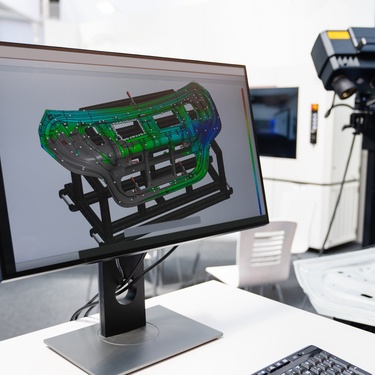
Reverse engineering is a vital process across various industries, enabling companies to innovate more efficiently, solve complex problems, and gain insights into products or technologies. If you’ve ever wondered which sectors benefit most from this technique, here’s an overview of five major industries that use reverse engineering and how they leverage its potential.
Automotive Industry: Improve Designs and Fix Vulnerabilities
The automotive industry relies heavily on reverse engineering to improve vehicle designs and address flaws. By analyzing competitors’ components or even their own systems, manufacturers can discover new ways to enhance performance, safety, and efficiency.
For example, reverse engineering can pinpoint vulnerabilities in crash safety or emissions systems, allowing engineers to develop better solutions. This process also plays a role in aftermarket customization, as it designs replacement parts for vehicles no longer in production.
Aerospace Industry: Analyze Competitors’ Tech and Ensure Safety
Innovation and safety are critical in aerospace, and reverse engineering provides essential support in both areas. By deconstructing competitors’ technology, companies can understand what sets advanced aircraft systems apart and adapt similar features to improve their own models.
Beyond innovation, reverse engineering ensures compliance with safety regulations. Aerospace engineers use this process to analyze wear and tear on critical components, redesign parts with updated specifications, and ensure continued reliability of older aircraft still in service.
Software Industry: Understand Codes and Enhance Cybersecurity
Reverse engineering isn’t exclusive to physical goods and plays a huge role in the software industry. Developers often reverse-engineer software to understand how legacy applications work, especially when documentation is incomplete.
It’s also a critical tool in cybersecurity, as analysts reverse-engineer malware to identify vulnerabilities and design safeguards against future threats. Through this process, software companies develop patches, strengthen digital defenses, and improve functionality while ensuring systems remain secure from external attacks.
Medical Devices Industry: Improve Existing Devices and Innovation
With patient outcomes on the line, the precision and performance of medical devices are vital. Reverse engineering refines existing devices by uncovering inefficiencies or functionality gaps.
For instance, analyzing older medical technologies can lead to the creation of cutting-edge tools that serve the same purpose but perform better, faster, or more accurately. It also enables the design of interoperable components for devices from various manufacturers, bringing more innovation into healthcare.
Manufacturing Industry: Streamline Processes and Ensure Quality
An increasing number of manufacturing companies use reverse engineering to streamline processes and maintain quality. This approach ensures machinery is running at peak performance by identifying flaws or inefficiencies in production equipment.
It’s also helpful in the reproduction of components or tools, especially if original blueprints are unavailable. By streamlining production processes and maintaining high-quality standards, reverse engineering helps manufacturers remain competitive in fast-paced markets where precision and reliability are nonnegotiable.
A growing number of industries use reverse engineering to drive innovation and efficiency. Whether it’s improving vehicle safety, uncovering cutting-edge technology, or securing digital systems, this process has a profound impact on many applications. Explore how reverse engineering could enhance your field and redefine what’s possible.
Bio: Casey is a passionate copyeditor highly motivated to provide compelling SEO content in the digital marketing space. Her expertise includes a vast range of industries from highly technical, consumer, and lifestyle-based, with an emphasis on attention to detail and readability.




















